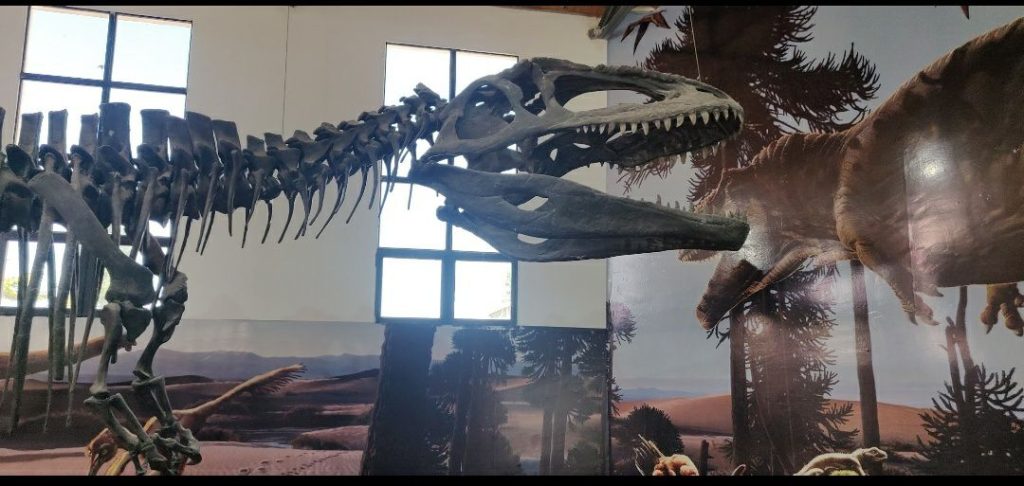Leaving the Andes Mountains and western Argentina left us with mixed feelings. On the one hand, we were excited to start a new part of our adventure, see new landscapes and sights and meet new people and cultures. On the other, we were going to miss the beauty of the mountains and lakes that had become second-nature to us. We had also made great friends in the previous few weeks and would be sorry to follow different paths.
Heading north-east from San Martin de los Andes, we had a 500km drive in front of us. After a brief stopover in Junin de los Andes, where we hiked to the top of the impressive and challenging Parque Via Christi, we continued to leave healthy green fields behind, replaced by scorched earth out the front window. How the temperature rose and rose as we ticked off the kilometers.
Our idea to cross the country via the Neuquen province arose from both ours, and the kids, desire to see and learn as much about Argentina’s dinosaur history as possible. And it has quite a history in this regard. Some 140 dinosaur species have been discovered here, ranking the country among the top three countries worldwide for research and discoveries. After all, the colossal Argentinasaurus, measuring 39 meters in length (a blue whale measures 30 meters, a T-Rex a mere 12 meters) called this area home.
Our first scheduled stop was Villa El Chocon, and the Ernesto Bachmann museum. Here we were able to visit each of the nine separate exhibition rooms, housing fossils and replicas of mostly carnivores, with the locally born Gigantosaurus proving to be the star attraction.
Next up was an hours drive to the Carmen Fuentes museum in Plaza Huincul. Here there was simply one room, with one main attraction. A 100 ton Argentinasaurus dominates every vista in the room, amazing guests young and old. Discovered just 8km from the museum, and measuring an incredible 3.5 city buses in length, this herbivore really does take you breathe away.
Our last main stop would be a trip to the Project Dino Geopaleontologico Park. Located right in the middle of a number of active gas fields, this would be an interactive experience right in the heart of dinosaur country. We travelled there the evening beforehand, and took advantage of our nomadic capabilities by sleeping close to the entrance under the star-filled cloudless sky.
Originally setup by the late-Jorge Calvo, Project Dino is an active paleontological site with new fossils being discovered, excavated and examined every year. The site is an historical treasure-chest, yet is woefully underfunded and ignored by the state. They operate via the goodwill of PhD students and the revenue of a small amount of tourists. Our guide Juan took us onto the actual site they were currently digging, to the laboratory to see how fossils they find are examined and identified, and then to their collection of discovered fossils. The enthusiasm that Juan and the other staff there had for their work was inspirational, and I for one left with that afternoon with much admiration.
Neuquen continued to serve up more Cretaceous sights as we passed the city and surrounding villages. Amazing life-size replicas littered the roadsides and parks contained all kind of species for kids to pose beside. Moreover, we found the locals only too happy to come and speak with us about the dinosaurs at any opportunity. They took real pride in their shared history and simply wanted to share that with their visitors.
We went to Neuquen in the hope of seeing and learning some new and interesting things. We lived this in abundance, via the dinosaurs we saw, the people who continue to work with them today, and the general public so eager to engage with us at every opportunity.
Click here to read the “Oh Just The 1,250km Detour…” blog post











Leave a Reply